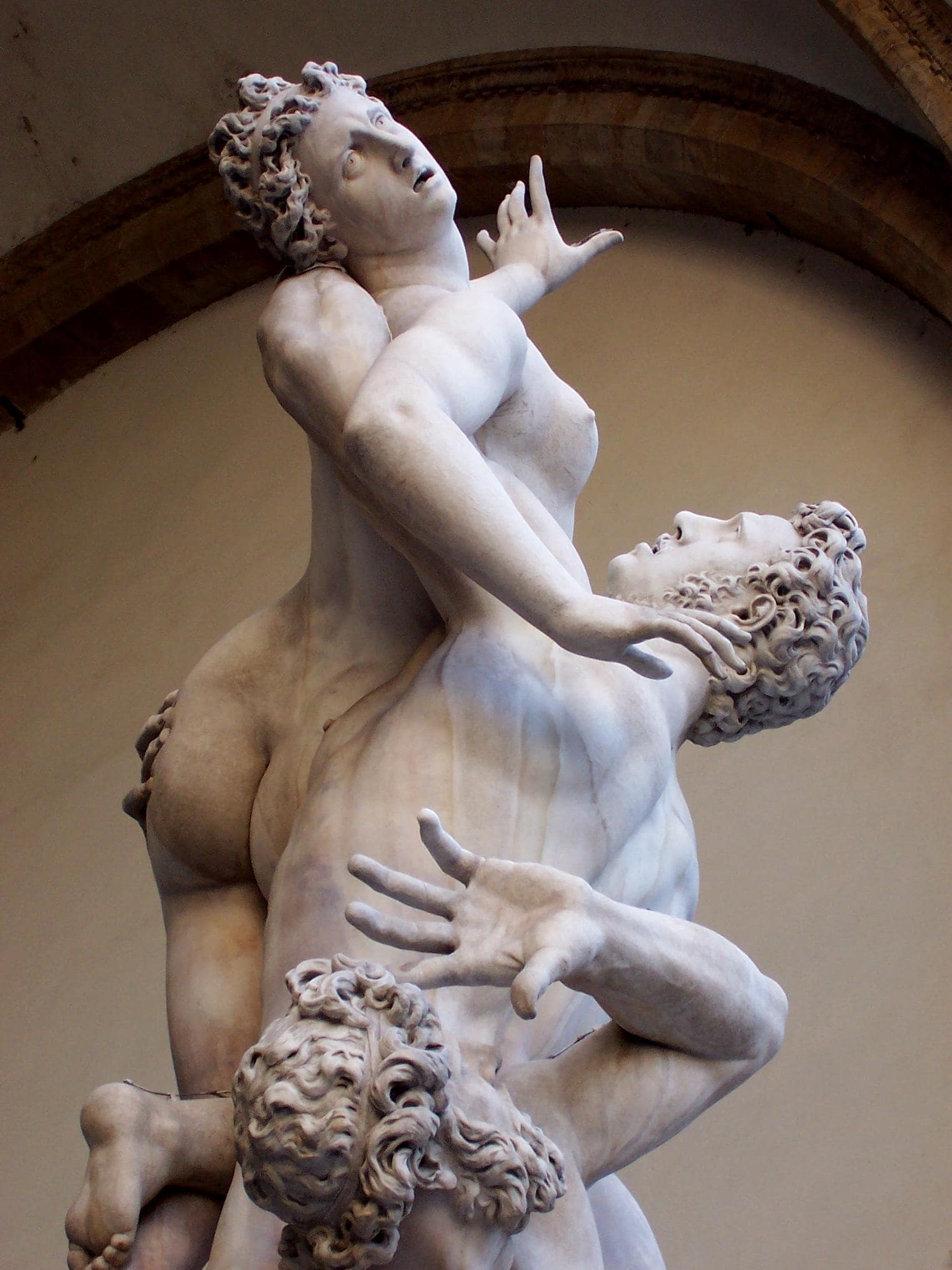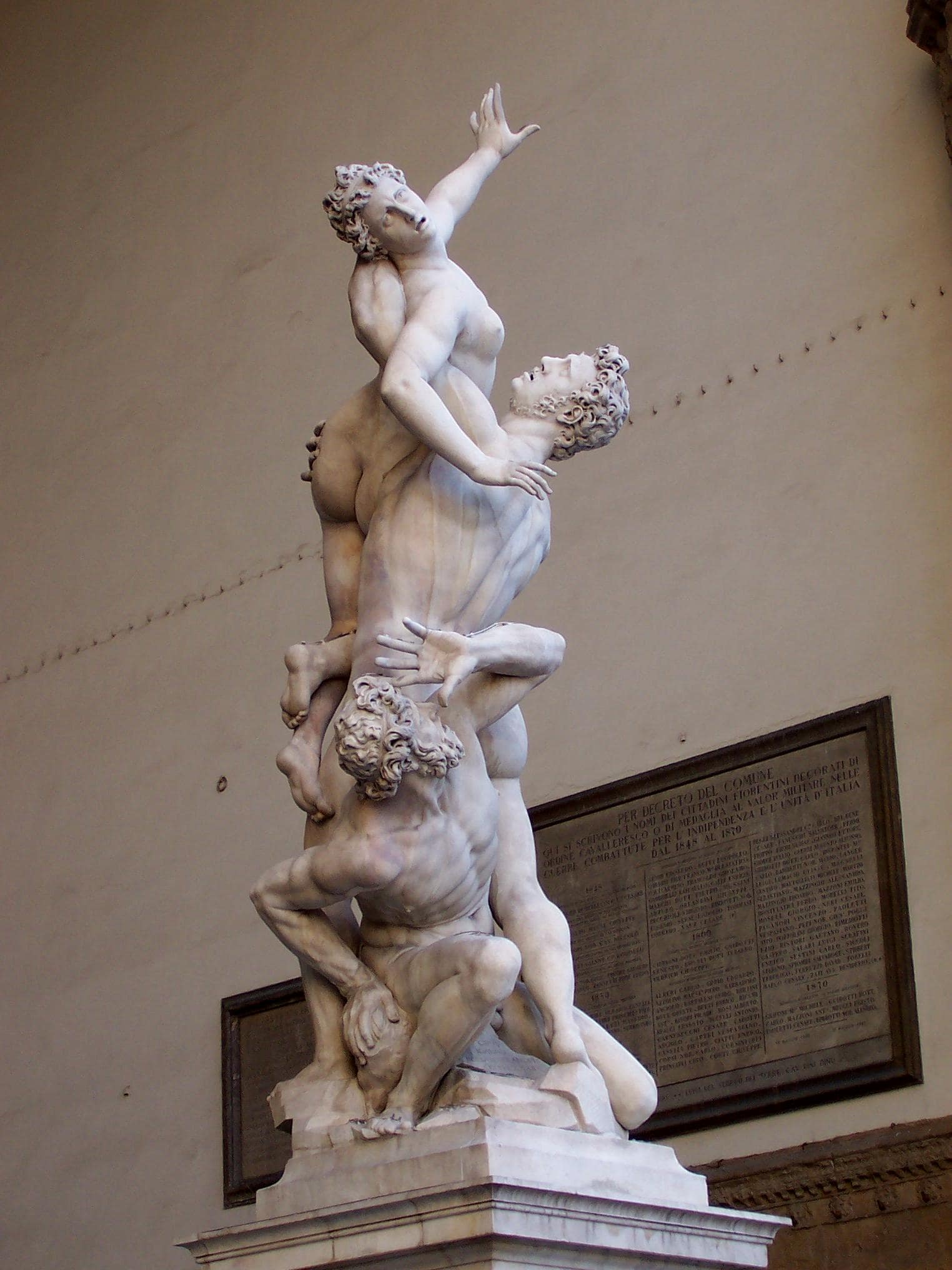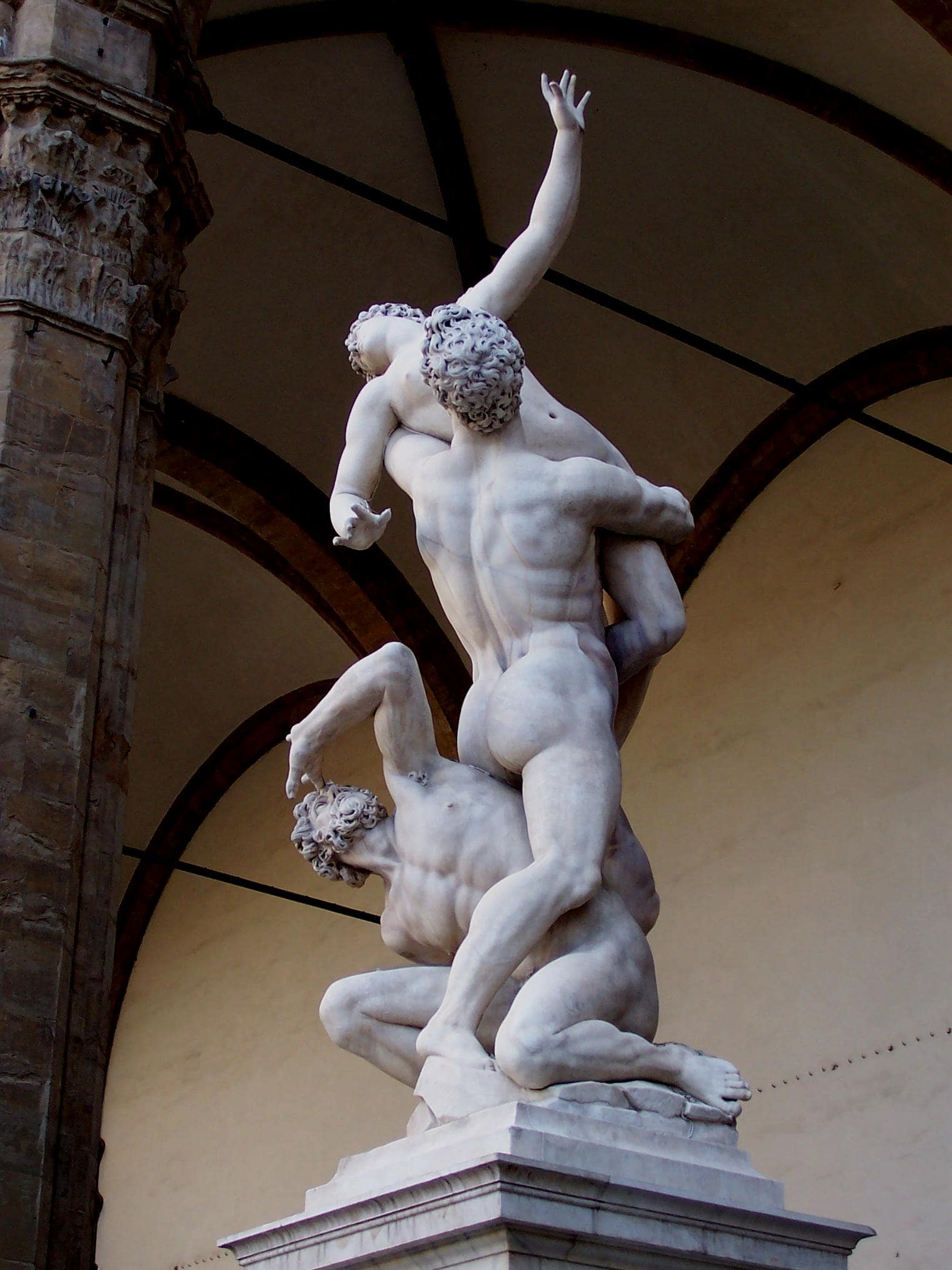
Have you ever wondered how a work of art can represent an entire era, even anticipating future artistic movements? If the answer is yes, then let me guide you into the world of Giambologna, one of the most innovative sculptors of late Mannerism.
Born as Jean de Boulogne in Flanders and trained in Antwerp, this master of art moved to Florence, where he would help redefine the canons of sculpture.
From this Florentine cultural workshop, Giambologna sowed the seeds for an art that would later flow into the Baroque, creating works that still leave us breathless today for their refinement and audacity. In this post we will look in detail at Giambologna’s Rape of the Sabine Woman to discover how it became a landmark of Mannerist elegance and a prelude to the Baroque explosion.
The Revolution of Giambologna’s Rape of the Sabine Woman

Giambologna, Italianised name of Jean de Boulogne, is an icon of the Mannerist style that became popular during the late Renaissance. His sculptures express an incomparable elegance and grace, evident in their soft white marble surfaces, sinuous lines, and subtle use of chiaroscuro.
One of the most distinctive elements of his works is the use of the ‘serpentine’ figure, characterised by an artificial twisting of the body that nevertheless appears completely natural. The figure seems to look in one direction while the torso is turned elsewhere, creating an enveloping visual dynamic.
RAPE OF THE SABINE: A TRIUMPH IN THE HEART OF FLORENCE
His best-known creation, the Rape of Sabina, occupies a place of honour in the famous Piazza della Signoria in Florence, located under the Loggia dei Lanzi next to Benvenuto Cellini’s Perseus.
This Loggia, a legacy of medieval architecture, was transformed at the behest of the Grand Duke of Tuscany, Cosimo I de’ Medici, into a sort of open-air museum celebrating his patronage and glorifying his reign.
A MASTERPIECE OF COMPLEX EXECUTION
Realised in 1583, Giambologna’s Rape of the Sabine Woman is a supreme example of artistic virtuosity.
According to Florentine critic and writer Raffaello Borghini, Giambologna did not have a specific theme in mind when he conceived the work. Rather, his aim was to show the extent of his skills, creating a complex work that would arouse wonder. The work, later associated with the episode of the abduction of the Sabine women in Roman mythology, is an exceptional creation from a single block of marble.
The three figures are arranged asymmetrically, forcing the viewer to move around the work to appreciate its complexity from different angles.
A NOVELTY IN THE SCULPTURAL LANDSCAPE
This work marks a significant turning point in the art of sculpture.
Until then, statues were generally designed to be viewed from a single point of view, the Rape of the Sabine instead demands that the viewer revolve around the work.
The composition of the figures, intertwined in an ascending spiral, invites the viewer to discover new angles and aesthetically effective curves. It is a revolution that would influence artists of later centuries and works such as Gian Lorenzo Bernini’s Apollo and Daphne.
Giambologna’s skill in representing the human body is extraordinary.
His figures display a slender elegance: elongated legs, slender torso, distinct neck and small head. These elements help create the illusion of fluid and natural movement, like the flickering flame of a candle, enhancing the dynamism of the composition.

Giambologna’s Rape of the Sabine Woman is more than just a sculpture: it is an artistic manifesto, a compendium of stylistic and technical innovations that anticipated the advent of the Baroque. With his audacity and refinement, Giambologna not only marked an epoch, but also charted a course for the future of sculptural art.
The work can be admired in the Loggia dei Lanzi in Florence but also, in the version of the sketch designed by Giambologna, in the Galleria dell’Accademia in Florence. In the first room, in fact, Giambologna’s enormous earthenware sketch of the Rape of the Sabine Woman can be seen in the centre, visible from all angles.
Besides the ‘Rape of the Sabine Woman,’ other works by Giambologna can be admired in other museums in Florence such as the Museo Nazionale del Bargello.

